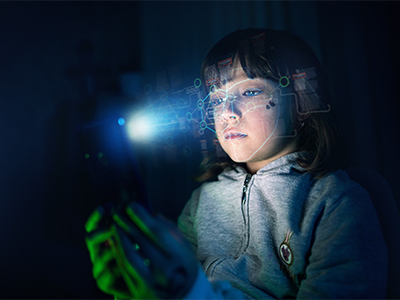Protecting children by enhancing facial recognition

Defence's ground-breaking biometrics research is being used to combat serious crimes against children.
When the phone rings, it could be a police officer seeking help with a child exploitation case or a government official trying to identify victims of child trafficking; it might be a journalist asking about a missing child.
Defence scientist Dr Dana Michalski receives requests for assistance from all over the world from people hoping to apply her team’s expertise to help solve problems.
The focus of her research is working out how to improve the chances of identifying children to prevent them from coming to harm. This involves not only fine-tuning the technology that powers facial recognition systems but also the development of evidence-based training for human face-matching specialists.
“Identifying children is particularly challenging because their faces change so much as they develop,” Dr Michalski explains. “Their facial features are changing in different directions and at different times, and different features are changing at different rates.
“We’ve done testing to assess the performance of algorithms and humans trying to identify children compared to adults, and there is definitely a gap in performance.
“The algorithms have got a lot better over the last few years because of new deep-learning methods, but there’s still a difference in performance. Humans tend to struggle; there’s almost a 20 per cent drop in performance when matching images of children versus images of adults.”
Defence scientists provide support for various agencies by testing the performance of commercial facial-recognition systems using images from the agencies’ own data sets and then suggesting improvements. This optimisation process enables the authorities to get the most out of the technology they have invested in.
While advances in technology have enabled law enforcement agencies to make significant breakthroughs in their efforts to protect children, Dr Michalski emphasises that there is always a human involved.
“We aim to make the whole identification capability better, rather than just enhancing the technology,” she says. “Understanding how the technology interacts with the human, and what the human’s decision-making process is and how to improve their skills is so important as well.”
When presented with an image of a child, a facial recognition algorithm tries to match the features of the child’s face against images stored in a database. The system might find a handful of possible matches that would be provided to a human for assessment and a final decision.
Looking ahead, Dr Michalski and her team are developing a training program to further enhance the skills of human face-matching specialists in Australia and across the world.

